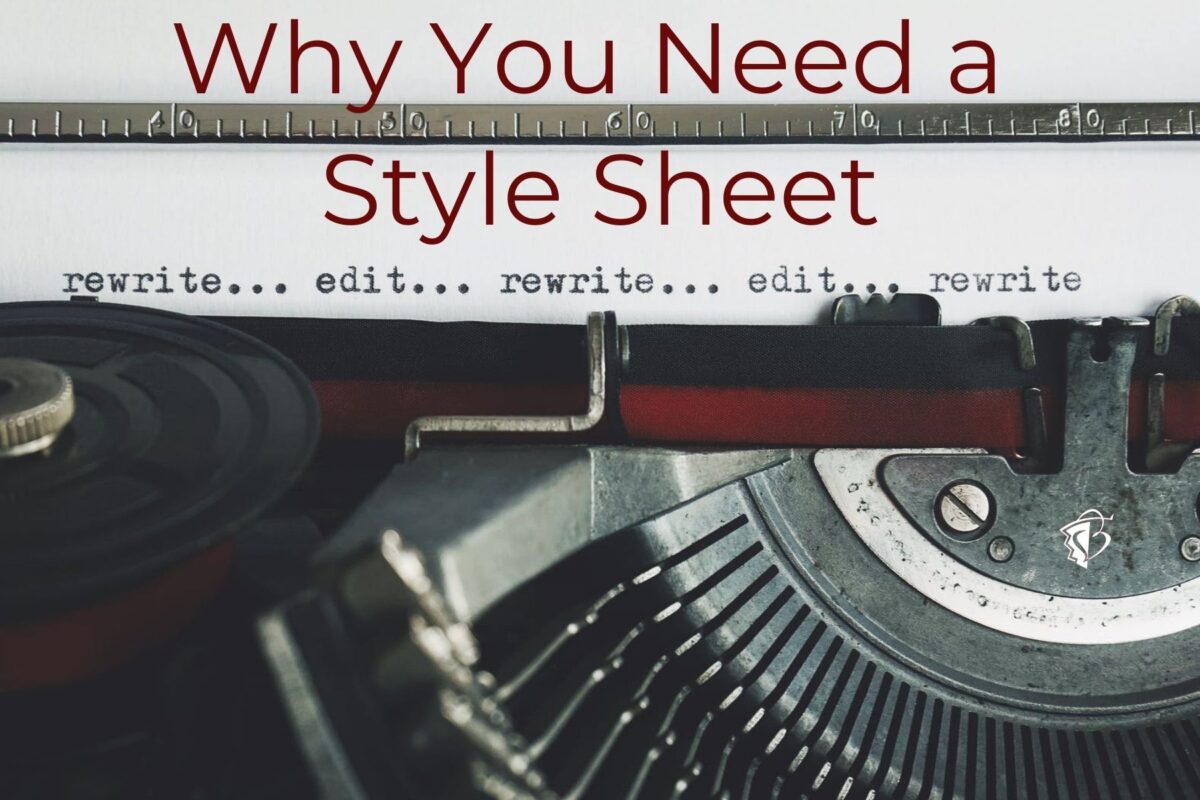In an earlier blog post, Boulder Editor Jill Tappert discussed style guides (also known as style manuals). Style guides provide editing guidance for a particular field or subject area. You may already know what style guide your publisher wants you to follow. Alternatively, your editor can help you select the right style guide (and dictionary) for your document.
Creating the style sheet: your editor’s job
But wait! There’s more! Your project also needs a style sheet (not to be confused with a style sheet used in web coding).
Inevitably, issues will come up in your manuscript that fall outside the strict boundaries of your chosen style guide. These issues may need further research or careful discernment on the part of your editor. Additionally, your editor may find herself making the same edits repeatedly.
Rather than skimming back through your document to see if you’re using the hyphenated or nonhyphenated version of a word, for example, your editor creates an ongoing, evolving list of frequently recurring edits. This ensures that there is consistency throughout the document. This list is called a style sheet, and it is unique to your document. (See a sample style sheet here.)
A style sheet typically includes at least the following items (not necessarily in this order):
- an alphabetical list of spelling and formatting choices for frequently used words, terms, and names
- rules for punctuation
- rules for numbers and formatting issues (e.g., capitalization)
- notes for layout (e.g., typeface, font size, spacing, etc.)
- dictionary
- style guide
Using a style sheet: your job as author
When you receive an edited document from your editor, it’s a great idea to begin by carefully reading the style sheet. Work to understand the recurring edits and the punctuation, formatting, and other usage principles. If you don’t understand a particular change indicated on the style sheet, ask your editor how she made that choice.
Fortified by the style sheet, you’re ready to dive into your manuscript. Try not to be daunted by the red “ink.” Many (perhaps most) of the changes your editor has made will be reflected on the style sheet, and you’ve already read and understood those editorial choices.
For example, if you spelled non-profit with a hyphen and your editor decided to follow the Merriam-Webster dictionary, you’ll see that she has changed the spelling to nonprofit, one word with no hyphen. Or if she is following the Chicago Manual of Style and is, therefore, using the serial comma (also known as the Oxford comma), she has added a comma at the end of a list (e.g., apples, oranges, and bananas).
As you review the manuscript, you don’t need to worry about noticing every time the editor corrected the spelling of nonprofit or inserted a comma at the end of a list. You already checked this off mentally when you read the style sheet, and you can rest assured that your editor carried these edits throughout your entire document.
Going forward: the style sheet’s ongoing job
Ultimately, the style sheet is a customized cheat sheet for your project—and it provides several benefits.
The style sheet gives you peace of mind. It lets you know that your editor has carefully done her job and made thoughtful decisions throughout your document. The style sheet ensures that there is internal consistency in your document.
The style sheet can help you improve future documents on your own—it can be a great tool for self-editing!
And finally, the style sheet provides a roadmap if you ever return to the project with another editor. That editor will be able to ensure that new edits continue to be in line with the previous edits.
Now that you and your editor have a style guide, dictionary, and style sheet in hand, you can be assured that your document will be in tip-top shape.

Thank you, Linda! This is a clear piece that will help authors who are new to the editing process.
Style guides and sheets can seem really confusing to authors who may not realize that there’s no single, definitive way to do things. What a nice, concise explanation of the decision process!
This is truly helpful and concise. Thank you, Linda!
Yes, Linda! This so clearly explains the use of and need for style sheets, especially for lengthy or adjunct projects. Thank you for putting it down in black and white.
So happy that you’re demystifying the style sheet for writers!